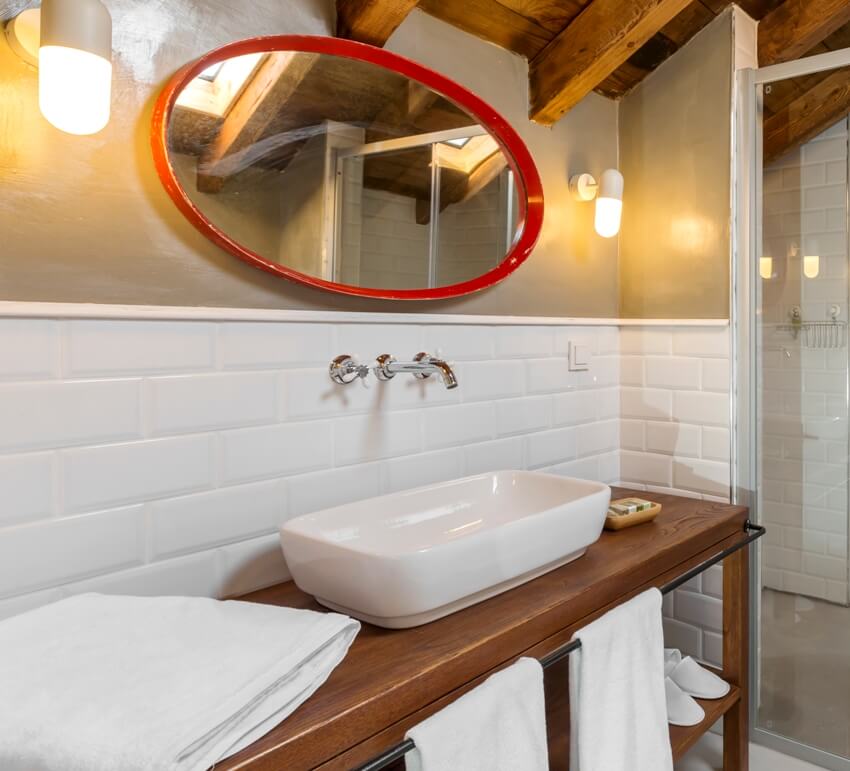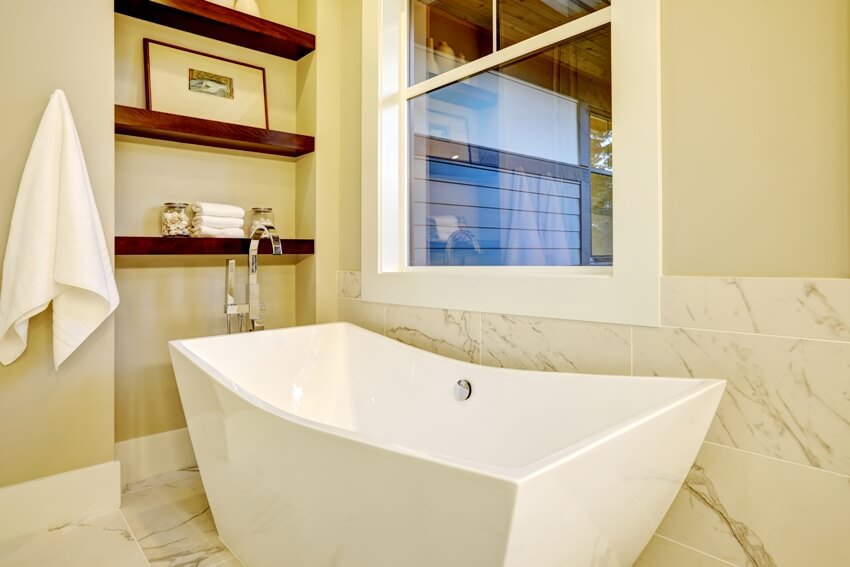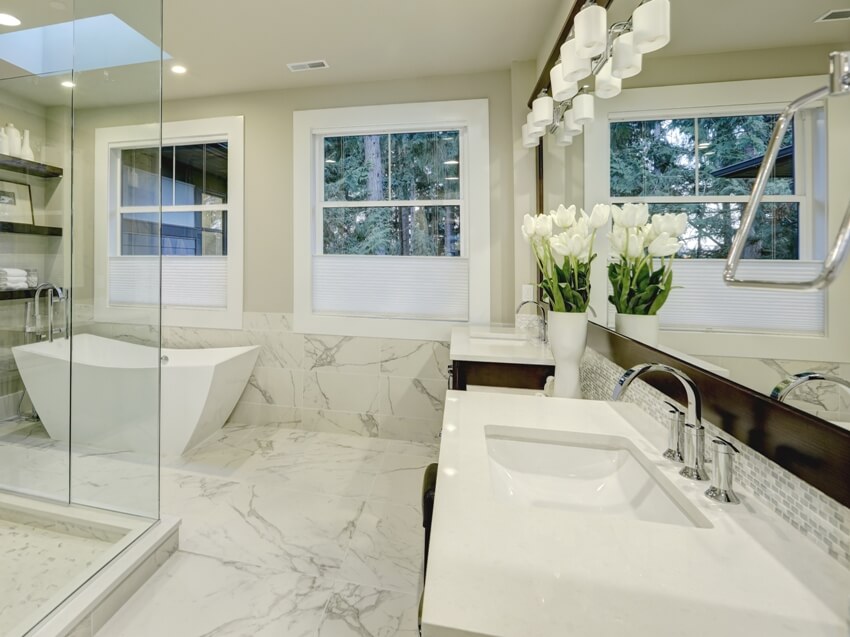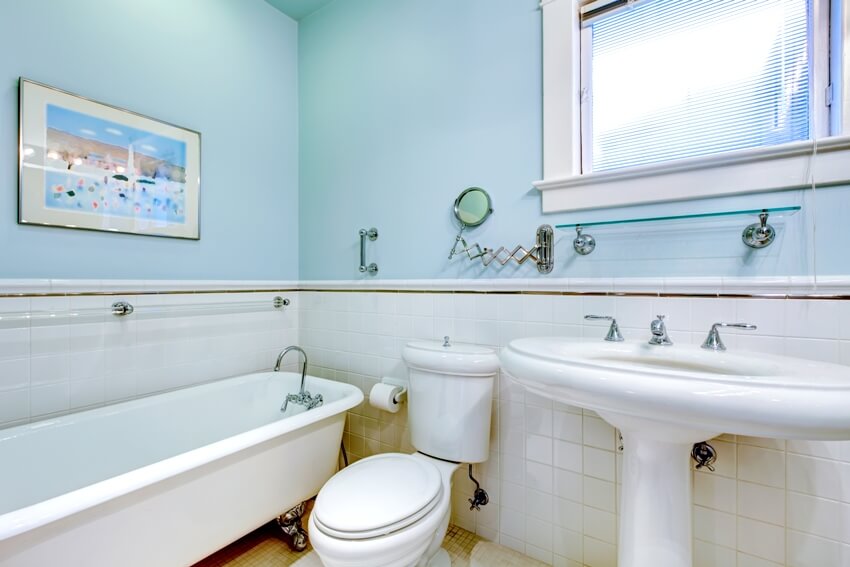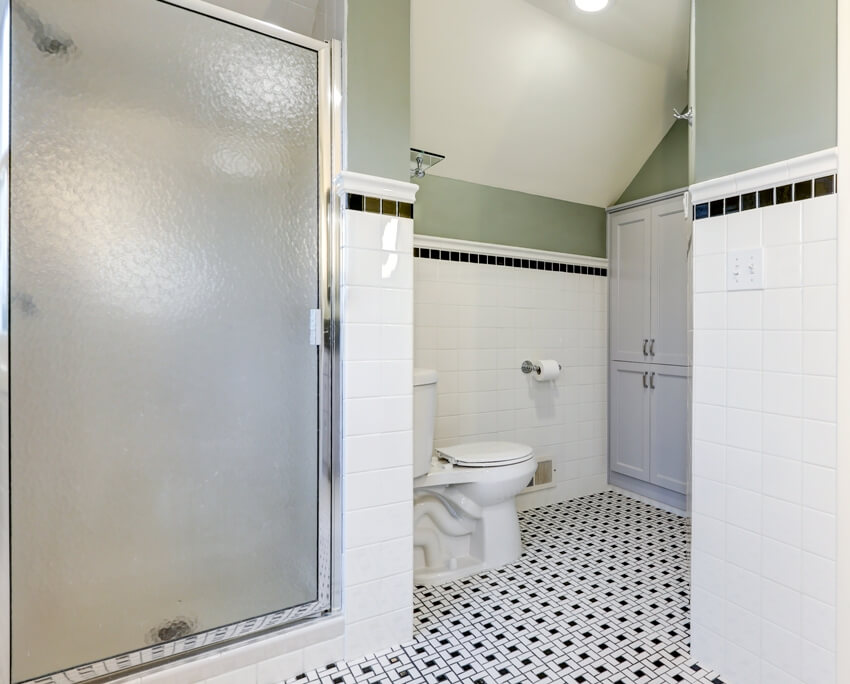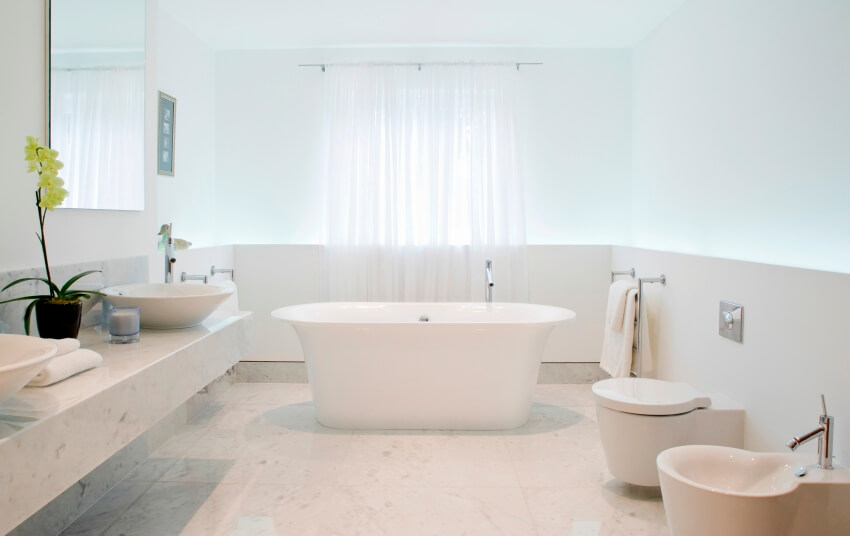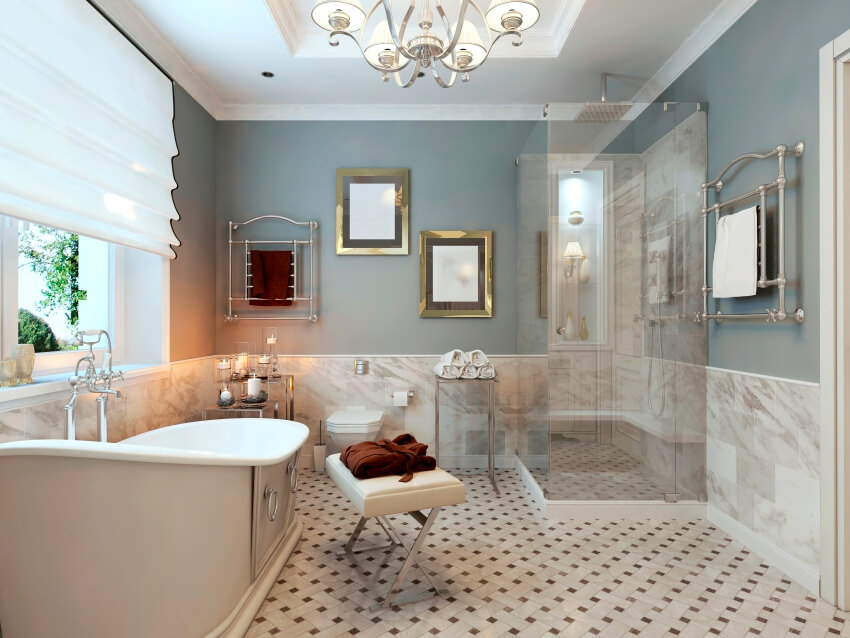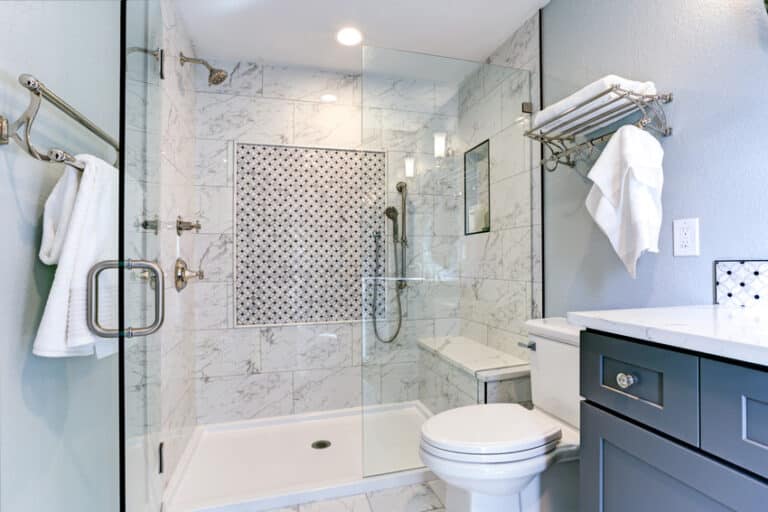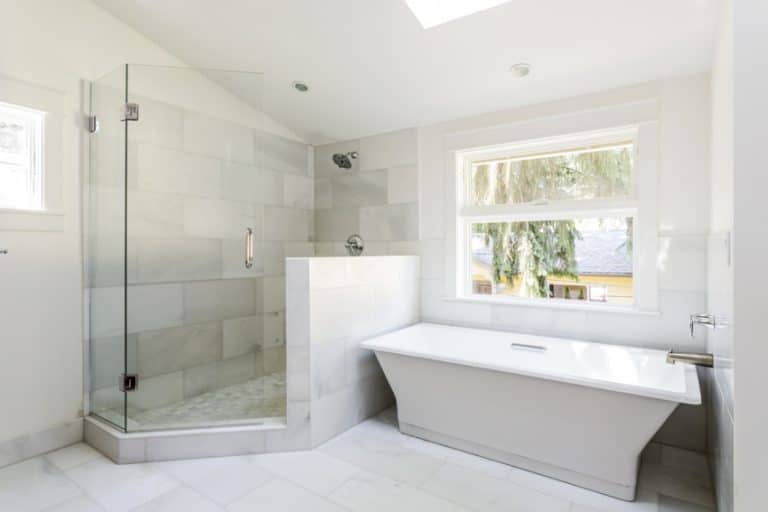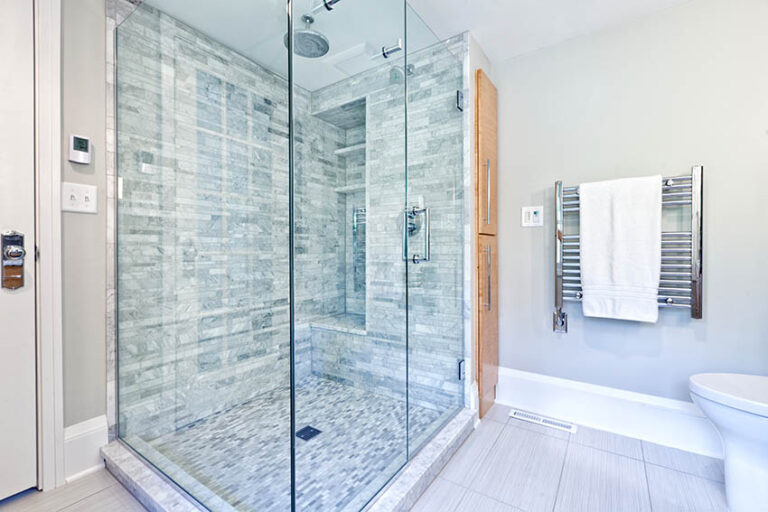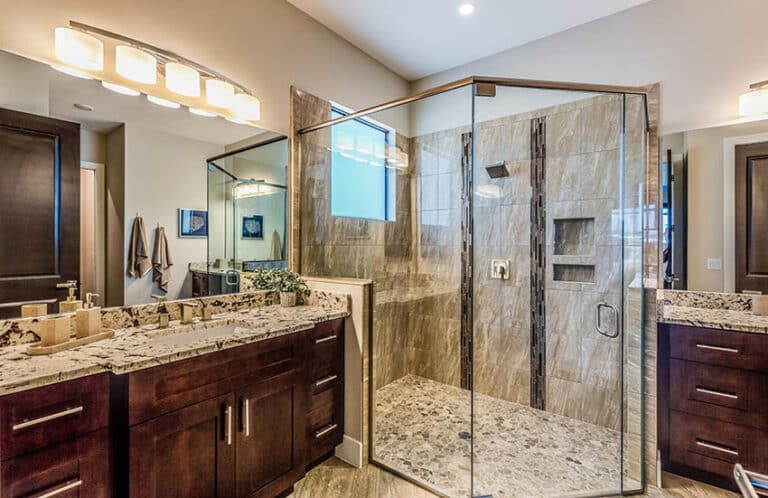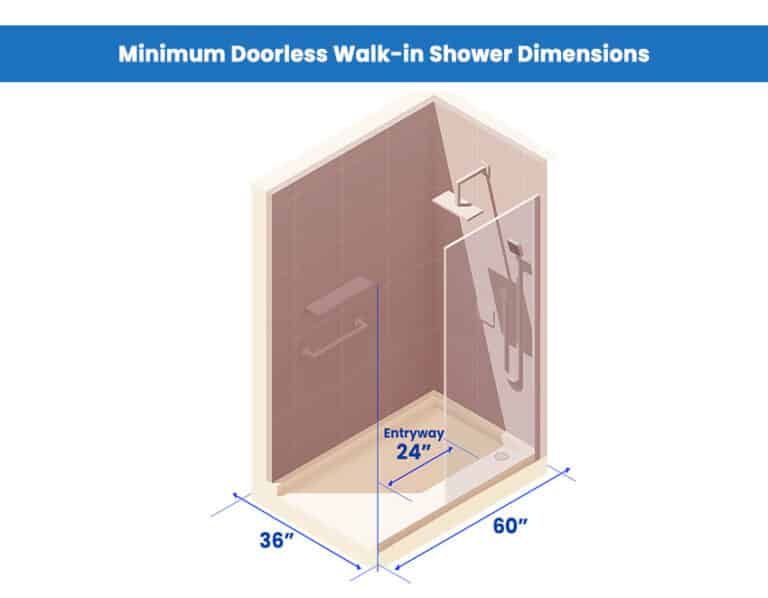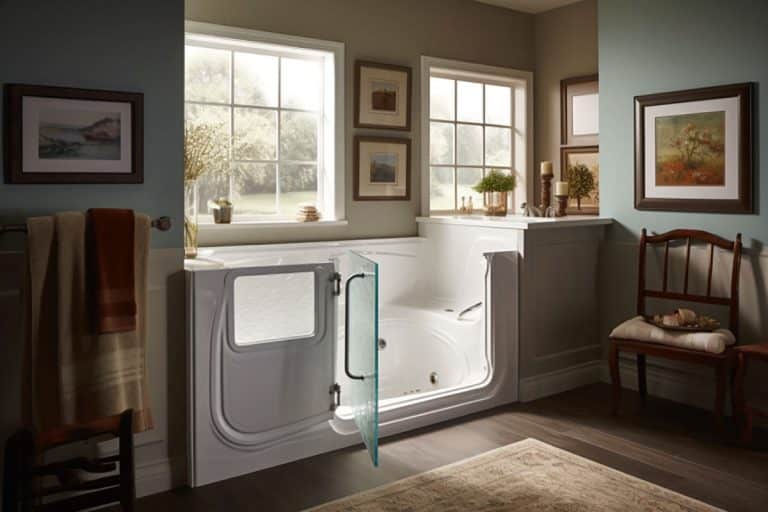Bathroom Half Wall Tile (Pros & Cons)
Here’s our guide to bathroom half wall tile, together with its pros and cons and shower tiling height recommendations to help you achieve the best design aesthetic.
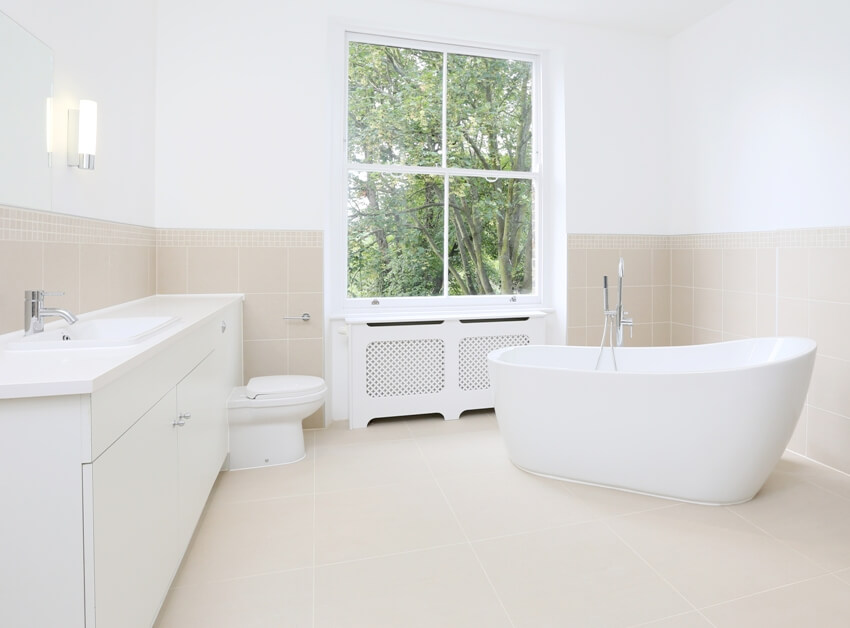
The most exciting part of designing a bathroom is choosing beautiful materials and colors of tiles to highlight to give your space that luxurious look. A bathroom deserves to get a lot of attention when it comes to decorating, and tiles are an essential element to the room’s functionality and safety.
Installing an appropriate placement of shower wall tiles ensures adequate protection with an aesthetic appeal.
Incorporating a half wall design is both practical and can be stylish at the same time. This process requires tiling the areas that need waterproofing, such as inside the shower enclosures and around baths, toilets, and basins.
Other parts of the bathroom walls that aren’t likely to come into contact with water can have other finishing materials, such as an ornate wallpaper, or you can paint the walls with complementary neutral colors for a clean, modern aesthetic look.
Should You Tile Halfway Up Bathroom Wall
• A halfway tiled bathroom gives many more ways to decorate, personalize, and customize your private space by incorporating paint into the mix and adding wall hangings and fixtures.
• Installing a minimal amount of pieces only in the splash zones above the sink and above the tub can create a very cohesive unit and a very defined bathing area.
• Installing only halfway up the wall is an opportunity to use an unforeseen or different accent color and pattern in normal locations to create a unique effect.
• Personalization is doing something ordinary in a way that isn’t common; consider new ways in which the tile can be used without being repetitious.
Bathroom Half Wall Tile Pros And Cons
See bathroom half wall tile pros and cons below.
Half Tiled Bathroom Pros
If you are tiling half a section of your bathroom, this is an opportunity to show your personality with bold colors and striking or patterned wall designs. In this way, you can balance with a plain color for the non-tiled wall.
You may also use an accent color paint for the non-tiled wall and opt for a plain-colored or neutral product instead. See our guide on using accent wall colors here.
• Adds Depth – Half-tiling adds depth and texture to your design scheme.
• Room Looks More Spacious – Combining tiles and painted walls can give the illusion of making small rooms look more spacious.
• Increase Value – Half tiling can give it a luxury facelift and increase property value.
• Add Personality – This design can become a statement feature for your design.
• Lower Cost – The material cost of having only half of the materials is far lower compared to having a full installation. Thus, this will result in a budget-friendly option for installing less materials and reducing labor costs.
• Can Use More Expensive Tiles – Since fewer materials are required for the design, you can have the privilege of choosing premium products as they cover a smaller area.
Half Tiled Bathroom Cons
• May Require Waterproofing Exposed Walls – One downside for half-wall bathrooms is that it leaves the other spaces open to elements such as unpleasant residue build-up or mold accumulating in damp spots. This requires you to use waterproof paint and install adequate heating and ventilation.
• Extra Costs – While it is cheaper to buy fewer materials, you will need to consider the unforeseen cost of the need to prep and decorate the blank space with paint or wallpaper. Read more about our tips for matching bathroom paint colors with beige tile.
• Extra Labor – Skirting boards will be required, and an increase in the labor cost that goes with installation.
How High Should Tile Be On A Bathroom Wall
Installing tiles on bathroom walls will always come down to your personal preference. Opting for a half-wall coverage, we suggest a height of around 35 to 36 inches being the average height.
Wainscotting is a classic border integrated with a decorative trim or a bullnose edge finish on top. This classic design feature is usually between 34 to 54 inches high, creating a traditional aesthetic appeal.
You may also want to opt for contemporary wainscoting, usually with a top border that is squared off with a glazed edge and blended in a plain paint finish.
If you are incorporating a border, the height for borders depends on the kind of effect you wish to achieve in your design.
Avoid placing the border along the middle of the bathroom; instead, position the border in the top third of the room, at eye level, or in the bottom third of the room.
Tile baseboard height consists of a “baseboard,” which is the first level of wall tile, which provides some protection when mopping and reduces mold growth.
These materials can be designed with special bull-nosed products with a finished edge, or they can be made out of cut tiles from the ones used for the floor, which are about 4 inches in height. See bathroom floor tile ideas here.
The backsplash goes along the height of the wall tile level installed at the back of the vanity and lavatory areas.
Typically, the wall tile at the backsplash level has the same height as the wainscot and is often topped with specialty tiles or moldings. This level of wall tiles is often followed through the shower or tub areas.
Tile Shower With Half Wall
It is very important to remember that the height of your shower tiling can affect the aesthetic look of the bathroom. Significantly, it would help if you balanced your room’s appeal and your wall’s functionality.
Generally speaking, it is not recommended to go below three-fourths of the shower walls that need to be covered by wall tiles to keep water flowing into the drain and not seeping into the walls; the rest of the walls can be painted for a crisp, simple, and modern feel.
Local codes specify that if the tile is your chosen method for covering the walls, then a minimum height of 6 feet above the finished floor height is required for a compact waterproof wall covering within an enclosed shower.
Shower tiles should be approximately 4 to 6 inches above the shower head; to ensure safe construction, we advise this as the minimum height.
For more related ideas, visit our gallery of popular types of bathroom tiles.

